Text by Annique Cockerill
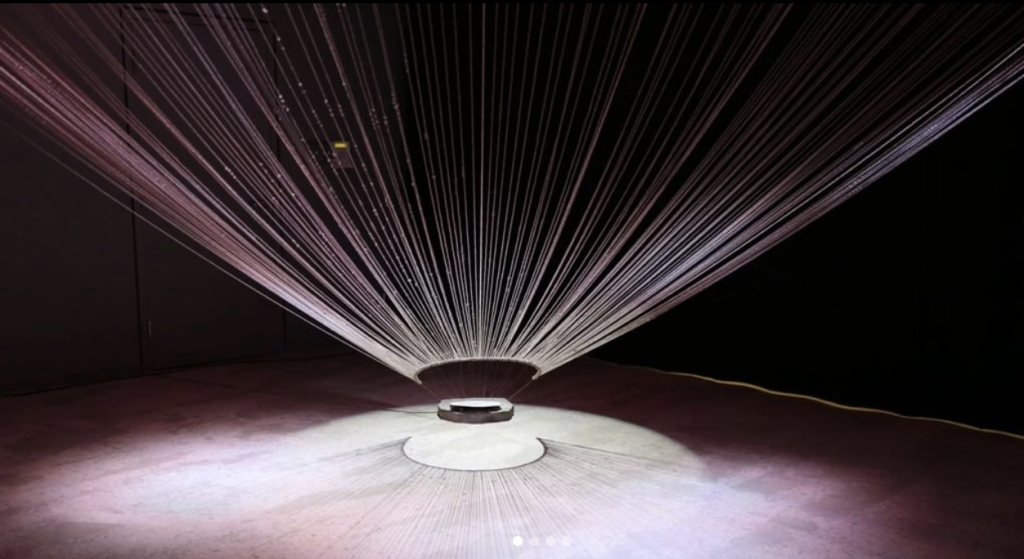
Creatives globally are adjusting to a re-opening, post-pandemic world. Art Laboratory Berlin’s newest project series Hackers, Makers, Thinkers: Collective Experiments in Social Fermentation is a global exploration of bio-art creative processes undertaken through isolation in order to explore how new social possibilities might emerge from the radical transformations of the last few years.
Six artists and artist collectives were invited to participate in artistic research, installation, and a two-day conference into collaborative art practices and the emergent concept of “social fermentation”. Fermentation, in its traditional sense, describes the anaerobic activity of microorganisms to enact change, usually producing alcohol or some other desirable foodstuff. Via their thesis of collaboration and adoption of the Do It With Others (DIWO) project development mode, Art Laboratory Berlin aims to cross-contaminate the creative microcosms of international artists and encourage a healthy socio-cultural biome to thrive in a post-COVID Berlin.
The Rice Brewer Sisters Club (RBSC) allows the literal and metaphorical definitions of fermentation to co-exist in their installation and ongoing project TERRESTRIAL-CELESTIAL. The installation brings rice fermentation techniques learnt during isolation in Korea into the gardens and galleries of Berlin, culturing human and garden micro-organisms within rice balls.
The rice balls act as an incubator for the nuruk (the Korean fermentation starter) and are used to activate indigenous micro-organisms from the soil through seokkeottuiumbi (a composting method). They are then re-introduced as microorganism ‘seeds’ for healthy garden biomes, enriching the soil of the Schrebergarten they originated from.
A key decision in this project was which gardens the RBSC would work with throughout this project. We visited sixty gardens in the first ten days, Soyoon Ryu from the RBSC tells. They were trying to find the right combination of garden, gardener, and micro-biome. They realised that they wanted to work primarily with immigrant gardeners, traversing social and microbial cultures through stories. The storytelling was emphasised as integral to the fermentation process- the elements of social fermentation: It’s in your traditions and your soil.
The importance of personal culture is a continual theme throughout the exhibition. In her work Entangled Beauty: A Perfect Marriage, artist Irene Agrivina places the scientific and artistic into the context of Indonesian spirituality and rural culture within Southeast Asia. The symbiotic relationship between the water fern Azolla and the cyanobacteria Anabaena functions as a biofertilizer, water purifier, bio-battery, and worship space for Dewi Sri, the Indonesian goddess of fertility and rice. As the two interact, they generate excess energy, which Agrivina has harnessed to incorporate an audio component into the installation.
Dewi Sri is said to have fallen from the sky, her body forming the variety of plants on which life is sustained. Cyanobacteria were the earth’s first photosynthesizers and are credited in modern science with forming the oxygen levels necessary for the planet to sustain complex life. The installation highlights the parallels between these creation stories, drawing together science and spirituality.
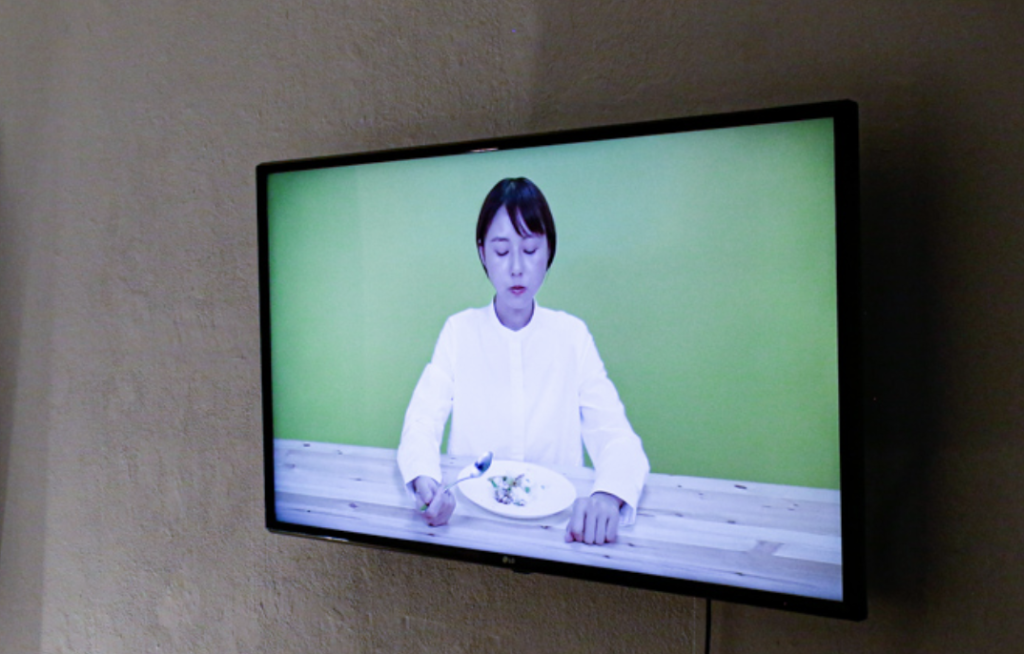
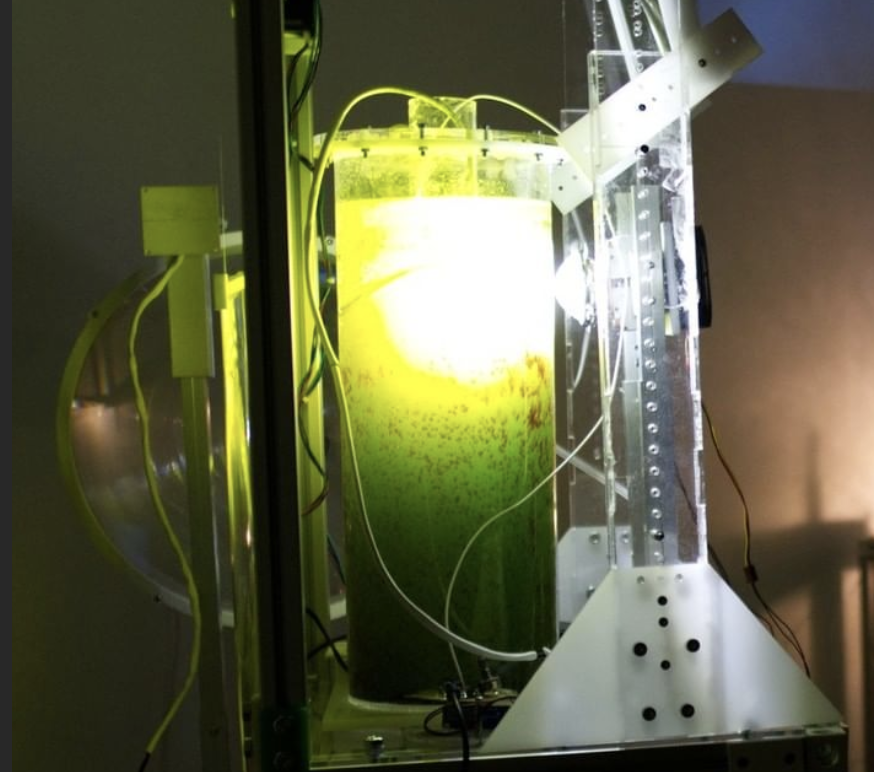
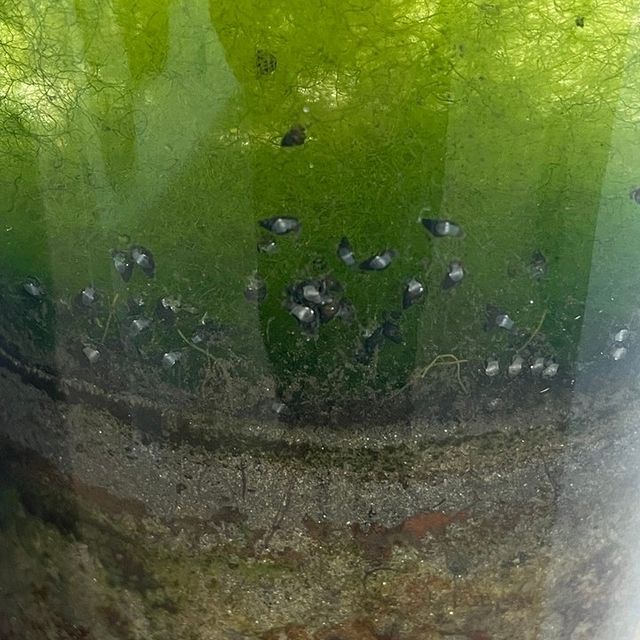
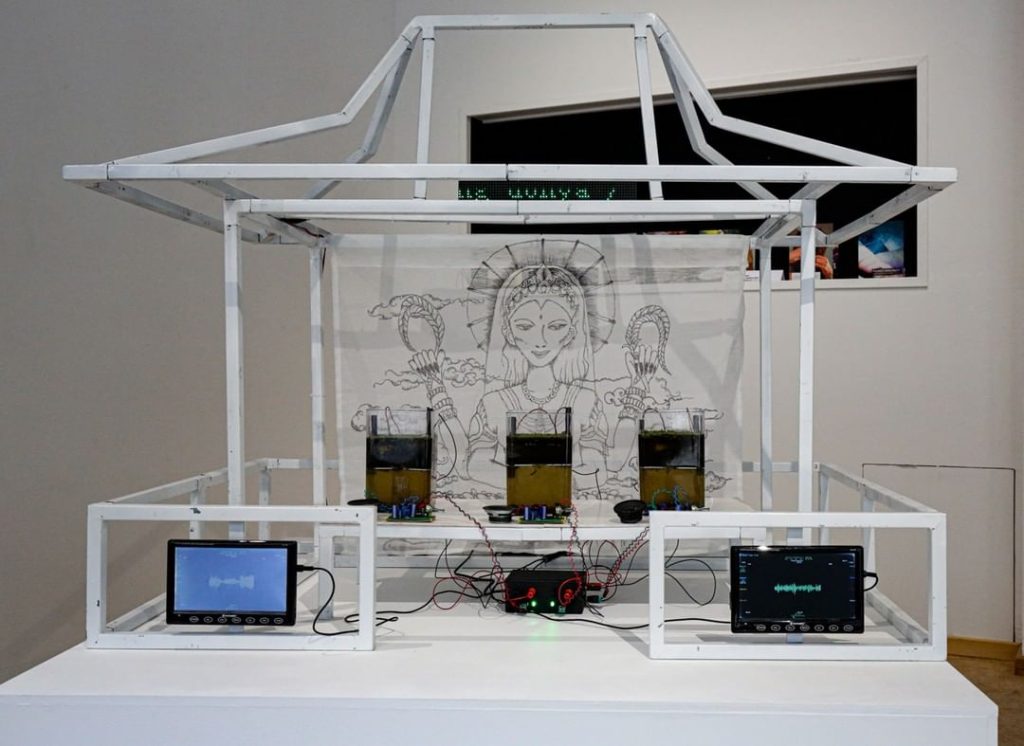
Whilst cyanobacteria may be heralded as creators, Cammack Lindsey addresses its darker role within our modern environmental context. Cyanobacteria, or blue-green algae, is the main organism within algal blooms, triggering catastrophic toxicity and oxygen deprivation in affected waterways.
This, of course, is not the algae’s fault. In their installation Holobiont: Relics from the Revolution and its accompanying performance, Lindsey imagines that the industrial and agricultural carelessness that has been polluting the waterways and causing algal blooms might evolve into a sort of symbiosis with the intersectional working class who suffer under the same exploitative systems.
The result is a revolution, a friendship, and a cross-species romance which underscores how the power of collaboration may radically alter systems in the face of eco-failure under capitalism.
Like Entangled Beauty, the audio of Holobiont is fed by changes within the biological component of the installation. What differs is the content. Agrivina links her installation to the rice fields and farmers of Indonesia through a generated cricket call, an allegory for the natural world’s engagement with the rural.
Instead, Lindsey’s installation evokes an apocalyptic eeriness as the reactor of cyanobacteria begins to sing O Falladah, Da Du Hangst (Ein Pferd Klagt An) by Bertolt Brecht. It tells the gruesome story of a horse who collapses from exhaustion and is immediately set upon by a starving working class who once cared for it. The horse dies wondering what conditions would cause people to turn from kindness to ravenous violence so quickly.
o felft ihnen doch! Und tut das in Bälde!
Sonst Passiert euch etwas, was ihr nicht für möglich haltet!
So help them! And do it soon!
Otherwise, something you think is impossible might happen to you!
Speculative science fiction within bio-art is utilised in several other works within this exhibition to delve into themes of collaboration. Pei-Ying Lin has been perusing her fascination with viruses through art since before 2011, at which time she predicted that by 2020 we would have a world that has been affected by viruses so much that it becomes a big part of our life. Knowing that it’s hard to view her installation Virophilia without anxious attentiveness. However, the various formats through which Pei-Ying explore the viral possibilities of the future delve into more than just the virus as a pathogen.
Cookbook for the 22nd Century explores a natural evolution of the humanities relationship with the virus in the food industry. It includes recipes that use viral properties to enhance the culinary experience. The works also include an ongoing scroll of known viruses and video documentation of the interactive cooking performances undertaken through the pandemic.
Spanning from the virus’s role as integral to food production to colour-changing cocktails and fever-inducing meals, Virophilia acts as a thought experiment through which the virus transcends its label of pathogen and becomes a collaborator.
Perhaps the work most evocative of the science fiction genre is the video and audio installation Codex Virtualis by the Mexican artist collective Interspecifics. At first glance, the work appears to be a digital taxonomy of simple living organisms. However, none of the organisms in this taxonomy exist in nature.
The project is a collection of speculative life forms generated through ecosystems of neural networks and AI algorithms that mimic evolutionary possibilities. The organisms are rendered in 3D, establish relationships with stimuli within the meta-environment, and are even exposed to conditions enabling the organisms to transfer genetic features.
The final installation takes Hackers, Makers, Thinkers from speculative futures to speculative pasts. Chilean artist Constanza Piña Pardo has been researching the ancient Incan “Khipu”, a pre-Hispanic device for recording information through knotted textiles, since 2013. Her resulting installation Khipu, along with an artist book and series of workshops, imagines the lost technology as a computer system of which the artist herself is a part and asks the question of how modern technology might have developed with different cultural backgrounds.
Her work is a bio-digital astronomical diary depicting celestial movements and salient events over 180 wool strings knotted in computer binary. Piña Pardo points out the single golden thread: a solar eclipse she witnessed. Each thread also contained a copper wire connected to a circuit, which picks up electromagnetic changes present at the installation sight and sonifies them. The resulting work is reminiscent of a gigantic string instrument arching above the witness’s head.
Overall, including this installation in the curatorial decisions also introduces meditative peace and slowness to the exhibition. Within the context of the “What’s Next” curatorial question, it proposes that the process focus reclaimed by some artists over isolation doesn’t need to be compromised as the world opens back up. In doing so, it introduces a new, final form of “social fermentation”, in which cultural histories might brew new life in the artistic biomes which follow.





